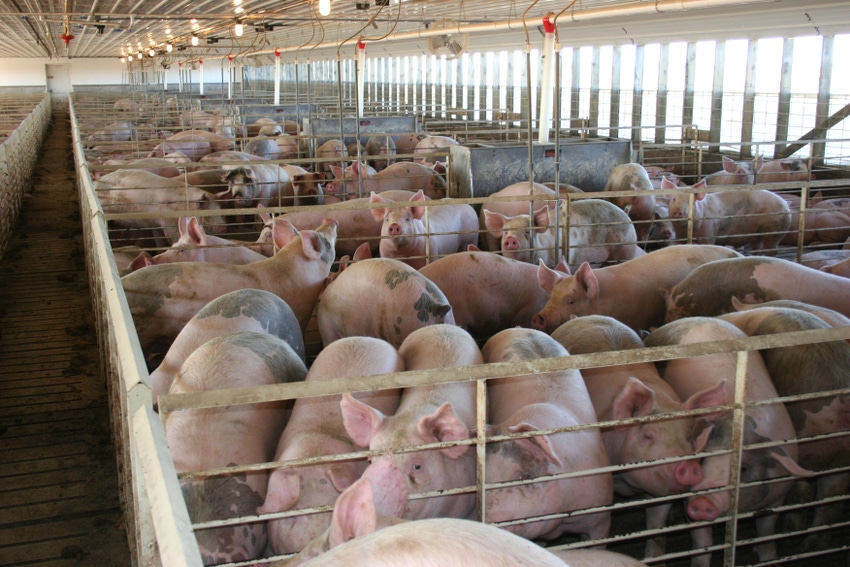Investigating the ‘complex’ in porcine respiratory disease
Identification of potential actors in PRDC is first step in necessary pathogenesis studies, subsequent control efforts.
December 15, 2020

Respiratory disease is common in pigs. While we typically associate respiratory signs with pathogens such as influenza A virus (IAV), porcine reproductive and respiratory syndrome virus (PRRSV), porcine circovirus 2 (PCV2), and Mycoplasma hyopneumoniae, clinical disease is the outcome of interactions between a plethora of pathogens, the host, and environment. The term “porcine respiratory disease complex” (PRDC) reflects the multifactorial nature of respiratory disease. Advances in diagnostic testing and research are shedding new light on the microbial pathogens involved in respiratory disease.
Next generation sequencing
The ability to generate massive amounts of DNA sequence information economically is revolutionizing our ability to detect and characterize microorganisms. In the past decade alone, numerous swine viruses have been discovered owing to next generation sequencing techniques, including porcine circovirus 3, atypical porcine pestivirus, swine acute diarrhea syndrome coronavirus (SADS-CoV) and several species of parvovirus to name a few. It is often unclear whether these viruses are “new,” or rather, if we are merely newly able to detect them.
Next generation sequencing encompasses a number of different technologies that have the common feature of generating large amounts of sequence data. Adding to the complexity are differences in how samples are prepared for sequencing. One approach, metagenomic sequencing, is particularly relevant for diagnostic testing.
The term “metagenome” signifies all the genetic material in a sample. For example, the metagenome from a nasal swab collected from a pig has genetic material originating from that pig itself as well as viruses and bacteria that infect it. Environmental material such as feed and insects also contribute genetic material to that nasal swab. With metagenomic sequencing, all the genetic material in a sample is randomly amplified and sequenced. The often millions of DNA sequencing reads generated are then analyzed by computers and compared to databases of known organisms to identify what is present in the sample.
Application to porcine respiratory disease complex
Influenza A virus, PRRSV, PCV2 and M. hyopneumoniae all play well-characterized roles in PRDC, but how do coinfections impact clinical disease? When a producer has an outbreak of respiratory disease and detects a new strain of PRRSV, should we ascribe more severe clinical signs to the new strain of PRRSV or is the clinical picture complicated by bacterial and viral coinfections? Differentiating between these possibilities can influence management decisions and herd health.
Porcine circovirus-associated disease is a good illustration of the importance of coinfections. Alone, PCV2 infections are typically sub-clinical. In controlled studies, coinfection with PRRSV or porcine parvovirus are used to induce clinical disease. A recent study (Tregaskis et al., 2020) investigated the role of porcine parvovirus 2 (PPV2), 3 (PPV3) and 4 (PPV4) coinfections with PCV2 in archived samples from clinical PCVAD or PRDC cases. The detection of PCV2, PPV2 and PPV4 were all significantly associated with lung pathology. Similarly, a metagenomic survey of pigs with PRDC was conducted in China (Qin et al., 2018). Detection of PPV2, PPV3 and PPV6 were all significantly associated with disease. Recent limited metagenomic sequencing of PRRSV-positive respiratory disease submissions at South Dakota State University (SDSU) found 30% of the samples contained at least one species of porcine parvovirus.
While there are only a handful of peer-reviewed papers describing the PRDC metagenome, the picture is clearly complicated. Besides the usual suspects, numerous viruses have been reported in clinically diseased pigs, including astroviruses, porcine circovirus 3, sapelovirus, hemagglutinating encephalomyelitis virus, senecavirus A, porcine respiratory coronavirus, porcine parainfluenza virus 1 and numerous species of parvovirus, often times as coinfections with established primary respiratory pathogens. As pathologists like to point out, mere detection of a microorganism does not establish a causal role in clinical disease, so interpretation of results can be complicated. Identification of the potential actors in PRDC is the first step in necessary pathogenesis studies and subsequent control efforts.
In summary, porcine respiratory disease involves a large number of microorganisms, many for which routine diagnostic tests are not available. While established pathogens such as IAV and PRRSV are important, coinfections with less known viruses and bacteria affect clinical disease. Metagenomic sequencing is increasingly offered as a service at veterinary diagnostic laboratories. While prices vary at different laboratories, metagenomic sequencing is offered at the SDSU ADRDL for $350 with a turnaround of 7-10 days. The ability to identify a wide range of microorganisms in an unbiased manner is a strength of metagenomic sequencing that will broaden our understanding of complex swine diseases leading to improved swine health.
References
Tregaskis et al., 2020. Co-infection status of novel parvovirus’ (PPV2 to 4) with porcine circovirus 2 in porcine respiratory disease complex and porcine circovirus-associated disease from 1997-2012. Transbound Emerg Dis doi:10.1111/tbed.13846.
Qin et al., 2018. Viral communities associated with porcine respiratory disease complex in intensive commercial farms in Sichuan province, China. Sci Rep 8(1):13341.
You May Also Like



